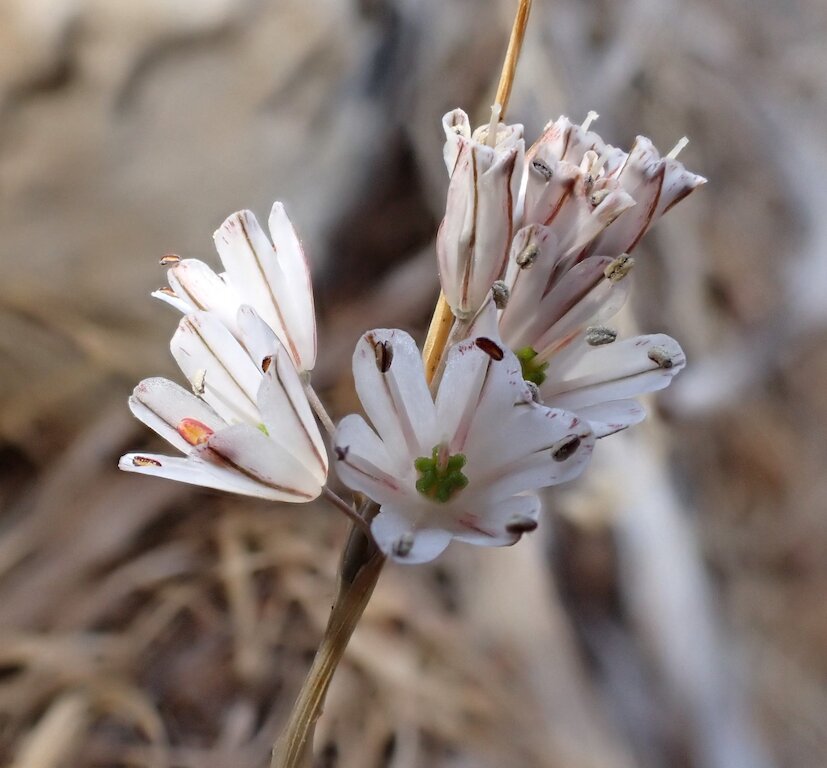The Peloponnese peninsula off the south of Greece is the most southerly part of mainland eastern Europe and has long been renowned as a botanical mecca, with many stunning species and endemics. On this eight-day tour in the autumn we shall be searching for the numerous autumn-flowering geophytes (and other wildflowers) of the area, while enjoying the spectacular scenery, history and hospitality of the Peloponnese in cooler temperatures than would be experienced there in the summer.
Arriving in Athens we should have a few hours to start our botanising. Here, close to the city, several Crocuses can be found, but most particularly the beautiful Wild Saffron Crocus cartwrightianus, a Greek endemic that does not occur on the Peloponnese.
Our first full day takes us across the Corinthian Canal and into the Peloponnese itself. We will soon find ourselves on country roads stopping along the way to search for plants. The bright pink flowers of Ivy-leaved Cyclamen Cyclamen hederifolium often decorate the road verges, and we shall look for the dainty white Crocus melantherus and C. hadriaticus that often grow together in neglected olive groves and on dry scrubby hillsides.
At Mystras we shall explore the ancient Byzantine settlement, with the afternoon spent enjoying the floral highlights of the pass over the Taygetos Mountains. Botanical highlights here are the delicate Crocus boryi, the easily overlooked Allium callimischon, and the very showy Campanula versicolor. Before leaving this area, we shall explore the spectacular gorge near Mystras where we can find Friar's-Cowl Arisarum vulgare growing below the Montpellier Maples Acer monspessulanum.
On our way south we shall divert into the Taygetos Mountains, winding along a narrow road through Pine forests until we arrive at a picnic spot in the shade of the Oriental Planes Platanus orientalis, their leaves turning golden at this time of the year. If we are in luck, here there should be a good showing of the endangered Queen Olga's Snowdrop Galanthus reginae-olgae.
From our base in the quiet and attractive town of Gytheio at the base of the Mani Peninsular, we shall explore further south and east. One day we shall travel to the most southerly point of mainland Greece along roads high above the clear Mediterranean and backed by stark, white mountains. Along the path to Cape Tainaron the diminutive Narcissus deficiens can be abundant, as is Cyclamen graecum and we hope to find the Peloponnese endemic Colchicum parlatoris. The Mani is also the home of the stunning Crocus niveus and the diminutive Colchicum zahnii.
Travelling east we shall visit the fascinating island of Monemvasia, attached to the east of the Malea Peninsular by causeway and bridge. After walking along the south side of the island we enter the ancient village through a tunnel and head up the narrow cobbled streets. Here, growing through the cobbles and on the buildings, we can find the Winter Cherry Withania somnifera, Scrophularia heterophylla, Hyoscyamus albus and, clinging to the walls of the houses, the endemic Stachys spreitzenhoferi. From the village we take the winding steps up to the top of the island which is scattered with ruins from the Byzantine, Venetian, and Ottoman periods. Here our main targets will be the wonderful displays of Yellow Autumn Crocus Sternbergia lutea and the more elusive Mediterranean Meadow Saffron Colchicum cupanii. Back on the mainland, with luck the early flowering Colchicum sfikasianum will still be out and we will search for the elusive Allium ritsii. Further inland we have some more Crocuses to look for including Crocus laevigatus and C. mazziaricus. Another day we shall head to the Caves of Diros to look for Shrubby Pink Dianthus fruticosus and beside the road the beautiful Fall Crocus Crocus goulimyi should be flowering.
Most botanical tours will head to Greece in the spring and early summer when there is a great abundance of species flowering of most families, including the popular Orchids and many spring bulbs. Although an autumn tour offers less in diversity terms, with many of the summer species having finished flowering, there are some very beautiful species to be found at a time of year when the UK is getting cold and dark and Greece is still pleasantly warm much of the time. We are looking forward to sharing this botanical wonderland with you!


























